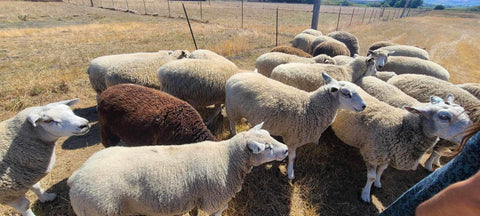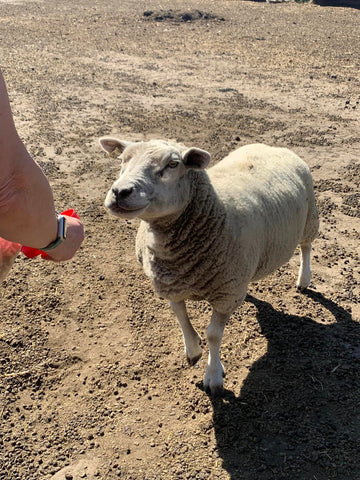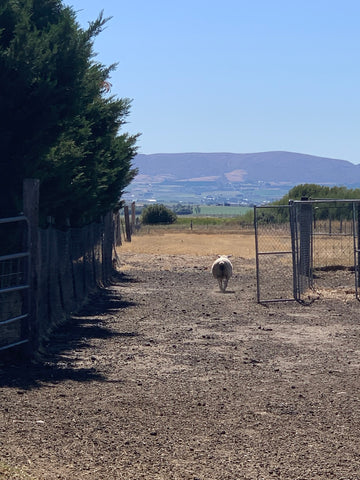Jami is the first shepherd we have teamed up with for the Pacific Northwest Women of Wool project. I thought it would be fun to pair each launch with a shepherd interview.
What made you choose Texel and Coopworth?
Back when we started with sheep, we were focused on meat production. Texel sheep add muscling when used to crossbreed on other sheep, improving carcass quality. When researching a good sheep breed to cross the Texels with, we came across successful breeding programs crossing Texels on Coopworth sheep in New Zealand. We sourced some Coopworths and this has been the most successful cross we have done with the Texels. We experimented a lot throughout the years trying other breeds, but the Coops have stayed. It wasn’t until later that I discovered the direct market value of the wool which has changed our focus quite a bit to supply quality handspinning wool to the fiber arts community.
What do you envision for your breeding program over the next few years?
I plan to do some artificial insemination breeding with the Texels, bringing in some UK top notch bloodlines to improve upon what we have built in the past 22 years. Another venture (adventure?) is to do some AI using Dutch Spotted sheep semen from the UK. This is a new breed to the USA. Dutch Spotted are heavily muscled sheep, similar to the Texels, but they have spotted wool which I found interesting and thought it would be a nice cross on my Texel ewes. Also, I am hoping the wool will be appreciated by the handspinning community.
What made you choose the PNW as home?
My family is here and even though my parents are now gone, my siblings remain in Washington state and so are my grown children and grandchildren. It’s home.
Why sheep? Why fiber arts?
I started raising sheep to raise lambs for 4-H shows for my daughter. I bought a small flock of Suffolk sheep from a local farm going out of business that was known to have show winners. It snowballed from there, waxed and waned, and then went crazy when I discovered the Texels in 2002.
I actually knew nothing about fiber arts until well into my career raising sheep. It was introduced to me by some local artisans through fiber events they sponsored. What a fun adventure it has been since then! Most of these folks do not have sheep, so I soon discovered just how lucky I was to have a steady supply of artistic medium – wool! It was like finding my tribe and we have all remained good friends.
What is your biggest challenge in the industry?
Direct marketing meat lambs to local customers has become an increasing challenge with the closure of many processing facilities and increased costs. Purchasing a locker lamb has become expensive for the consumer with the rising costs. The lack of USDA processing facilities that are willing to harvest lambs is another obstacle. This prevents access for restaurants to purchase farm raised grass fed lamb like ours. These challenges have changed our focus again, away from direct marketing meat.
Anything else we should know about your farm? You?
Sheep are a big part of my life. My travels center around fiber shows, sheep shows, sheep educational events, ram sales, and so on. I have amassed a large network of fabulous friends surrounding these events and sheep production. This has enriched my life in multiple ways and keeps me busy too! I belong to several sheep breed associations and am active in the Washington State Sheep Producers and our county producer group as well.
Enjoy some photos I took when we visited Cooke Creek to pick up all our wool!




Hello Sales,
I would like to make an inquiry about some products. But before i proceed, Please inform me on:
- Shipping to Belize, Central America (if possible) ?
- Minimum order quantity ?
- If my US credit card is accepted ?
- Delivery lead time ?
- Price sheet ?
I would be awaiting to receive the reply as soon as possible.
Sincere,
Wayne Pohl
Sepro Store Inc
+1 559 981 8127
4413 Nim Li Punit St,
Belmopan, Belize Central America